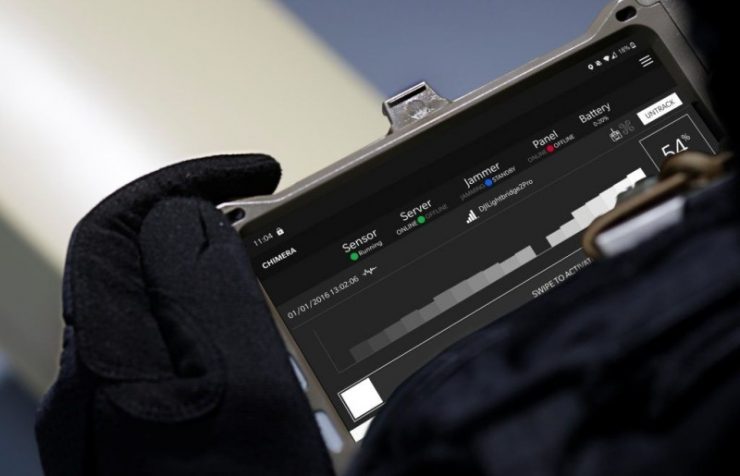French manufacturer Cerbair has announced its latest counter unmanned aircraft systems (C-UAS) product development on LinkedIn. Cerbair says its Chimera C-UAS system offers two levels of drone detection: Omnidirectional – for continuous automatic drone detection; and direction finding – for manual drone detection. The combination of detection and neutralisation technologies is suited to on-the-go-missions.
According to a report by edrmagazine, the development started when Cerbair integrated its established Hydra detection module into a rucksack. With capital provided by European missile manufacturer MBDA, Cerbair included an ominidrectional antenna, developed a directional element to accurately locate drone threats, and completed development of a jamming module. Once the technological demonstrator was available, it was thoroughly tested, and then nearly two years were needed to make it a rugged military-grade system, supported by MBDA.
According to edrmagazine, Chimera is aimed at detecting and defeating commercial drones, which represent the major threat both for military and homeland security scenarios, and more specifically Class 1 drones according to the NATO classification. Thus the detection module monitors the two typical frequency bands used by those drones, the 2.4 and 5.8 GHz ones, both in the RF and in the WiFi modes. This is carried out using the omnidirectional antenna which is located over the rucksack; when the system identifies a surge in emissions in those bands a warning is issued and is shown on the Android C2 tablet which is worn by the operator on the chest; the detection range is declared at 1 km, although in optimal conditions it can be greater. The system data base allows to identify the drone based on the frequency and the protocol. Being based on a single omnidirectional antenna, it is impossible to close on the target using the TDOA (Time Difference On Arrival) technique, hence it is now the turn of exploiting the rifle-like directional antenna.
To do so the operator starts scanning with the area, the tablet providing a graphic interface that show when the signal increases; The C2 element features various modes of operation, including target tracking, alerts data base, etc. Beside the graphic interface, the operator can also be equipped with a headset emitting a signal which frequency increases while the antenna closes to the target direction. A compromise had to be made on the antenna directional performance in order to allow an easy aiming of the system, EDR On-Line understanding that the optimal aiming sector is around 20°; the jamming sector is similar, the signal being generated by the emitting module that is also hosted in the rucksack.
The latter also hosts the batteries that power the Chimera; Cerbair selected BrenTronics batteries, which are of standard use in the military, in order to reduce the logistic footprint. Different options are available, with smaller and bigger batteries, the higher power ones providing a continuous operational time of over 12 hours in detection mode, and 2-3 hours in jamming mode, however the latter mode is usually used for few seconds at a time. A solution with two batteries fitted with a hot-swap mode allowing to double the operational time is also available. The rucksack weighs around 8 kg without batteries, the latter weight depending on the selected solution.
The directional antenna is encased into a composite materiel body which provides protection, the system being designed to operate in hot scenarios, the case being designed also to maintain the emitting elements at a safe distance from the operator. No precise dimensions were provided, but the rifle-like directional antenna should be around one meter long, its weight being of around 5 kg.
The Chimera has been field tested by various French military and police units, which received pre-production systems, and was also used during some events such as the G7 meeting in Biarritz in August 2019 and the Med 7 in Corsica in September 2020. The fully industrialised version is being produced now, a further round of testing being scheduled ahead of potential contracts.
(Image: Cerbair, S. Derradji)
For more information visit:




